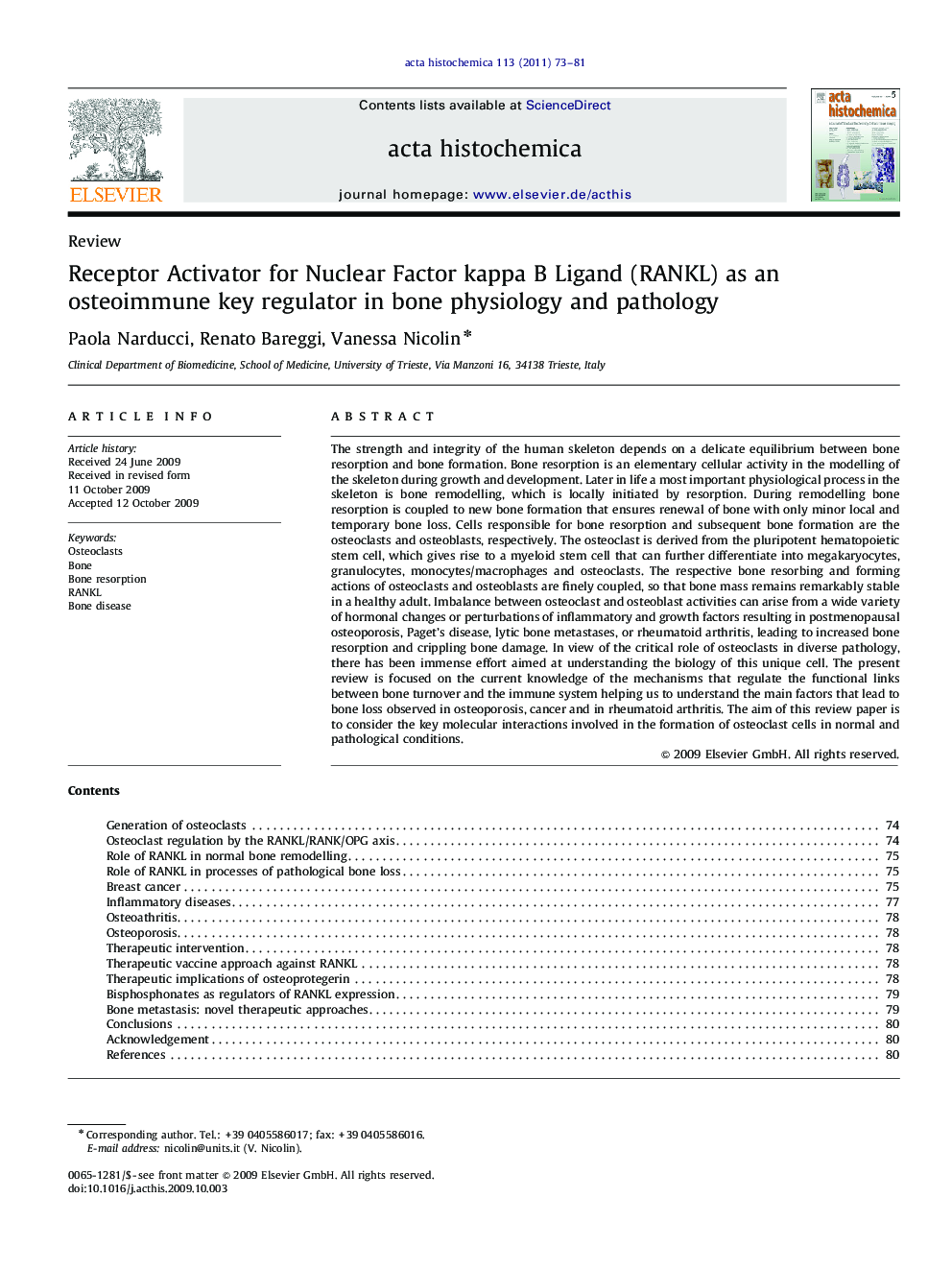| Article ID | Journal | Published Year | Pages | File Type |
|---|---|---|---|---|
| 1923721 | Acta Histochemica | 2011 | 9 Pages |
The strength and integrity of the human skeleton depends on a delicate equilibrium between bone resorption and bone formation. Bone resorption is an elementary cellular activity in the modelling of the skeleton during growth and development. Later in life a most important physiological process in the skeleton is bone remodelling, which is locally initiated by resorption. During remodelling bone resorption is coupled to new bone formation that ensures renewal of bone with only minor local and temporary bone loss. Cells responsible for bone resorption and subsequent bone formation are the osteoclasts and osteoblasts, respectively. The osteoclast is derived from the pluripotent hematopoietic stem cell, which gives rise to a myeloid stem cell that can further differentiate into megakaryocytes, granulocytes, monocytes/macrophages and osteoclasts. The respective bone resorbing and forming actions of osteoclasts and osteoblasts are finely coupled, so that bone mass remains remarkably stable in a healthy adult. Imbalance between osteoclast and osteoblast activities can arise from a wide variety of hormonal changes or perturbations of inflammatory and growth factors resulting in postmenopausal osteoporosis, Paget's disease, lytic bone metastases, or rheumatoid arthritis, leading to increased bone resorption and crippling bone damage. In view of the critical role of osteoclasts in diverse pathology, there has been immense effort aimed at understanding the biology of this unique cell. The present review is focused on the current knowledge of the mechanisms that regulate the functional links between bone turnover and the immune system helping us to understand the main factors that lead to bone loss observed in osteoporosis, cancer and in rheumatoid arthritis. The aim of this review paper is to consider the key molecular interactions involved in the formation of osteoclast cells in normal and pathological conditions.
